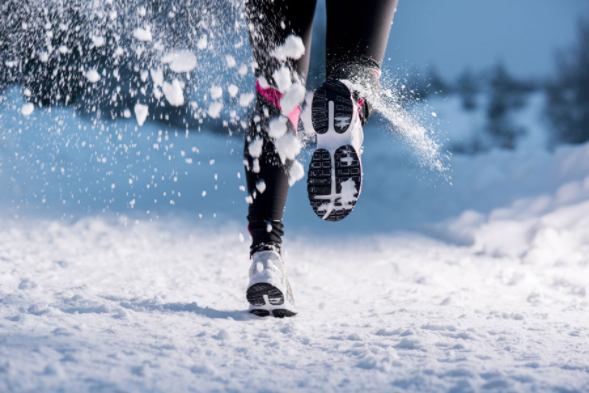Injury prevention exercises may very well be the most important aspect of a runner’s race prep. The ability to withstand the thousands upon thousands of impacts with the ground each run, can not only make or break your performance, it can also prevent injuries that can stop race prep dead in its tracks.
The three lower body joints (ankle, knee, and hip) are the most common site of injury for runners. Depending on how you run, and where your body’s natural strength and weaknesses lie, one joint may be more prone to injury than others. Saying that, strengthening up each area is a great way to ensure you prevent the most common areas of injury. Below are recommendations on simple strengthening exercise you can do for each lower body joint.
My recommendation is you carve out five minutes each day, right before bed, to perform the exercises described below. A sample schedule could be:
- Monday/Wednesday/Friday: Ankle
- Tuesday/Saturday: Knee
- Thursday/Sunday: Hip
Ankle
The ankle joint may be the single most critical area of the body for a runner (that’s why I recommend strengthening it 3 days/week). Strong ankles can prevent plantar fasciitis, Achilles tendonitis, and shin splints from occurring. The 3-way ankle prehab is a great way to strengthen the ankle complex to prevent these types of issues. The 3-way ankle prehab involves 3 movements (inversion, eversion, and dorsiflexion) at the ankle. Please click here for a video demonstration of the exercises. This workout goes fast, you’ll only need to do 10 to 15 reps per leg of each exercise, and since you’re alternating ankles, you won’t need to rest between sets.
Knee
The knee undergoes a tremendous amount of stress when running. Strengthening up the knee can prevent runner’s knee, patellar tendonitis, and IT Band issues from occurring. The knee prehab is a simple workout you can do to prevent knee-related injuries. Please click here for a video demonstration of the exercises. Perform 10-15 reps of the first 3 exercises (hip flexion with internal, external, and no rotation). For the marching pelvic lift, perform 10-15 lifts of each leg off the ground.
Hip
Although the hip is a complex joint, the area of consistent weakness is the glutes. In fact, both the glute max (bigger butt muscle) and the glute medius (smaller butt muscle on the outside of your hip) tend to be weak in most runners. This can lead to a whole series of issues in the knee and ankle, as well as some localized issues in the hip (like IT band problems). You can strengthen the glute max and medius by performing:
- Full Body Superman’s: 2 sets of 10-15 reps, with a 30 second break in between sets
- Side Lying Hip Abduction: 2 sets of 10-15 reps per leg, alternating legs (no rest in between)
About the Author:
-

Michael Stack is the founder & CEO of Applied Fitness Solutions and Frontline Fitness Pros. He is a faculty lecturer for the University of Michigan’s School of Kinesiology. He is also the creator and the host of the Wellness Paradox Podcast, produced in conjunction with University of Michigan.
Michael is an exercise physiologist by training and a health entrepreneur, health educator, and fitness industry advocate by trade. He is dedicated to enhancing the standard of practice of, and advocating for, fitness and wellness professionals to ensure they become an essential constituent in the healthcare delivery system.
With a career spanning over three decades in fitness, health, and wellness Michael has a deep knowledge of exercise physiology, health/wellness coaching, lifestyle interventions to mitigate chronic disease and leadership. He is credentialed through the American College of Sports Medicine (ACSM) as an Exercise Physiologist (ACSM-EP), Exercise is Medicine practitioner (ASCM-EIM), and a Physical Activity in Public Health Specialist (ACSM-PAPHS). Michael is a National Strength & Conditioning Association (NSCA) Certified Strength & Conditioning Specialist (CSCS), and a CDC Diabetes Prevention Program (DPP) Lifestyle Coach.
Michael received his undergraduate degree from the University of Michigan’s School of Kinesiology in 2004 and is currently a Master’s of Public Health (MPH) candidate at University of Michigan, with a specific concentration in health behavior and health education.
Michael is a board of directors’ member for the Physical Activity Alliance and Michigan Fitness Clubs Association. He sits on the University of Michigan’s School of Kinesiology Alumni Board of Governors. Michael is an expert curriculum reviewer for the American College of Lifestyle Medicine. Finally, he is a member of the executive leadership team for American Heart Association’s Heart Walk.
Michael lectures nationally for several health/fitness certification and continuing educations, including; IHRSA, the Medical Fitness Association, the National Strength & Conditioning Association, and SCW Fitness.
